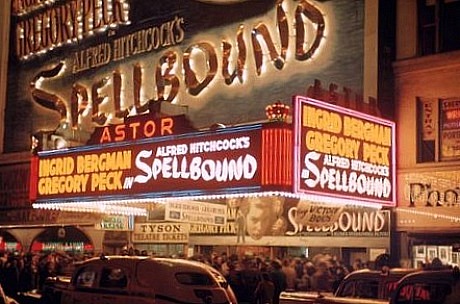Last March I posted shots of old-time Times Square marquees (“Big Ass Marquees,” “More Marquees“) from the ’50s and ’60s. Here are some new discoveries. The color pic of the Astor’s display for Alfred Hitchcock‘s Spellbound is an eye-popper. If only the others had this kind of luminosity. You can almost see Michael Corleone and his girlfriend Kay trying to nudge their way through the main doors.
“Along with the almost-complete disappearance of palace-sized movie theatres with balconies over the last 30 years is the abandonment of super-sized, building-mounted promotional art,” I wrote last year. “We still have the huge billboard posters along L.A.’s Sunset Strip and along 42nd Street between Eighth Avenue and Times Square, but it’s a shame that today’s moviegoers will never know the visceral thrill of standing before flamboyantly large movie promotions attached to big marquees (or building walls above marquees) that were common in Times Square until the mid ’60s. They had a real Collossus of Rhodes-type aura, these displays. What’s life without a little grandeur?”
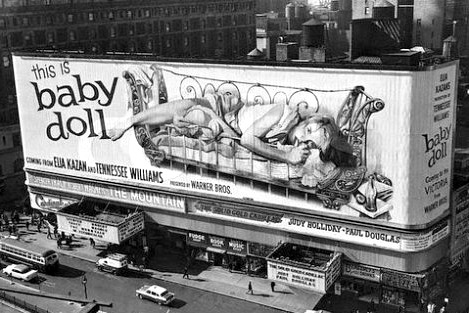
At some point during Martin Scorsese and Kent Jones’ Letter to Elia, it’s said that Baby Doll director Elia Kazan persuaded Warner Bros. to mount this huge, erotically provocative billboard of Carroll Baker.
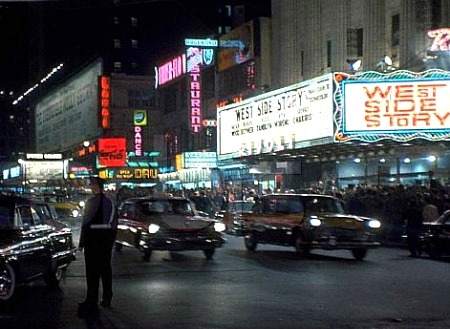
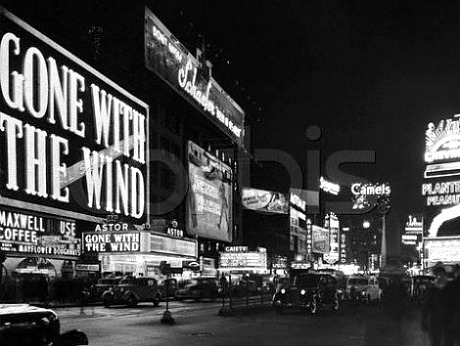
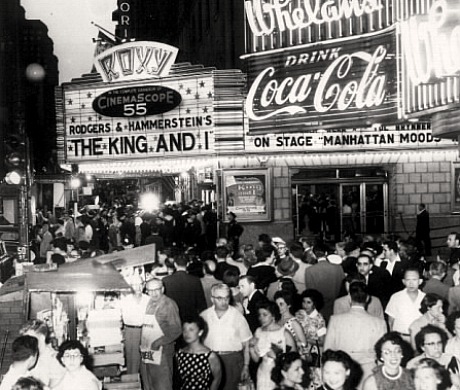
The 5,920-seat Roxy theatre, located at the northeast corner 50th Street and 7th Avenue, opened on 3.11.27 and was torn down in 1960.
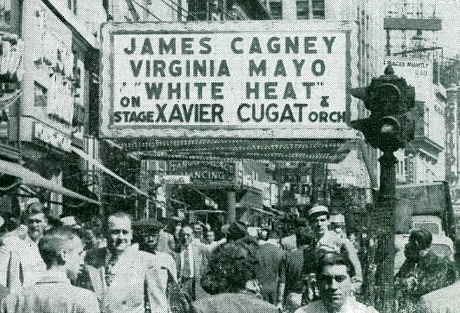
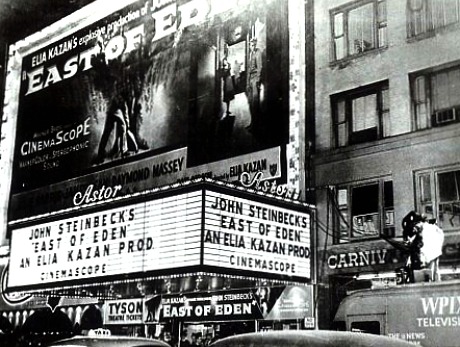
Notice that neither the billboard nor the marquee mentions James Dean — the movie was sold entirely on the reputations of Elia Kazan and John Steinbeck.
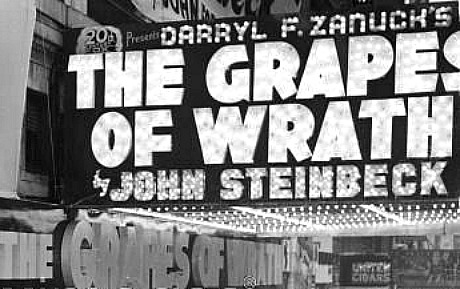
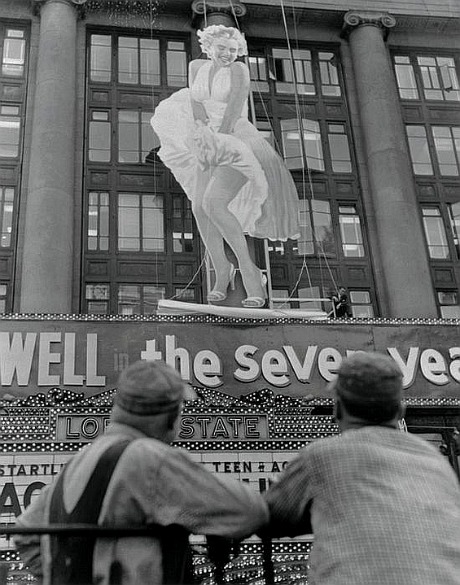
Snapped sometime prior to the 6.3.55 opening date of The Seven Year Itch, the second of five ’50s films directed by Billy Wilder during his house-director phase, so-called because these film represented a creative hibernation for Wilder, a retreat from his usual cynical characters and stories, acid-tinged dialogue, third-act emotional turnarounds. The house phase also included Sabrina (’54), The Spirit of St. Louis (’57), Love in the Afternoon (’57) and Witness for the Prosecution (’57). Wilder finally returned to form in ’59 with Some Like It Hot. The house phase began in the wake of the success of Wilder’s Stalag 17 (’53). It’s been speculated it may have partly been prompted by the failure of Wilder’s bitterly caustic Ace in the Hole (’51).

